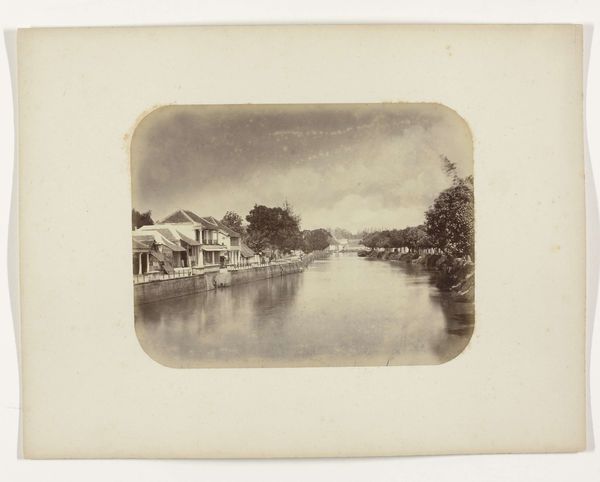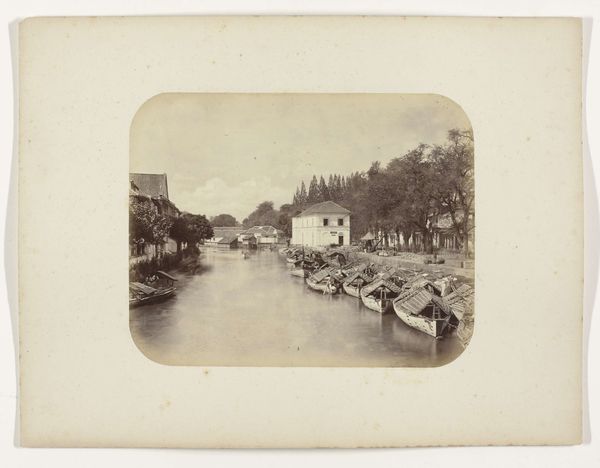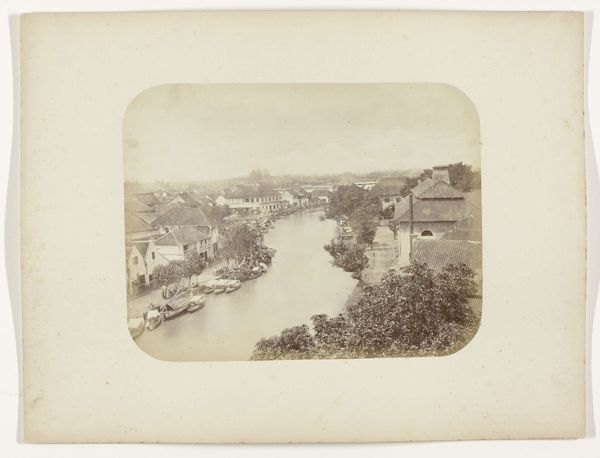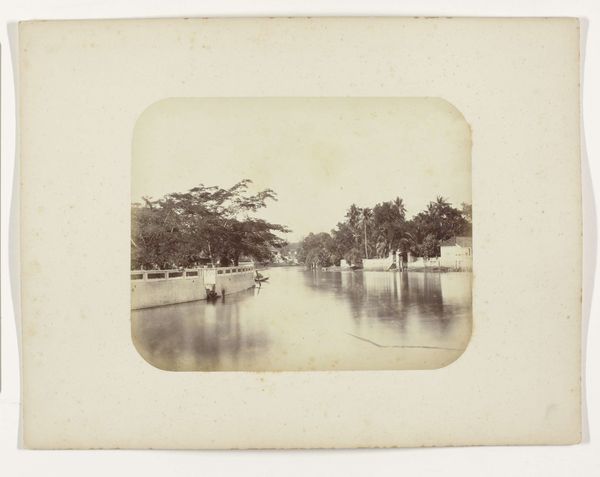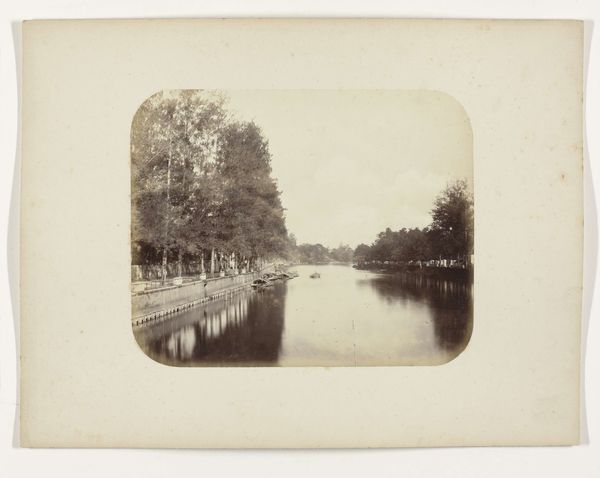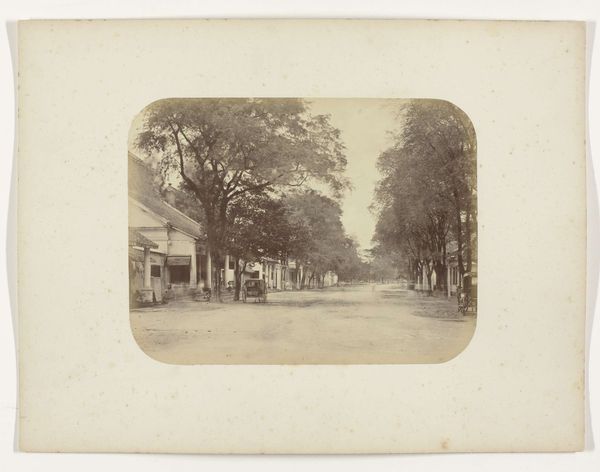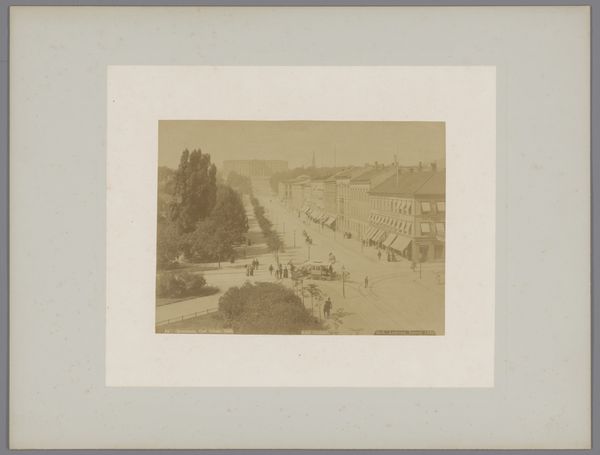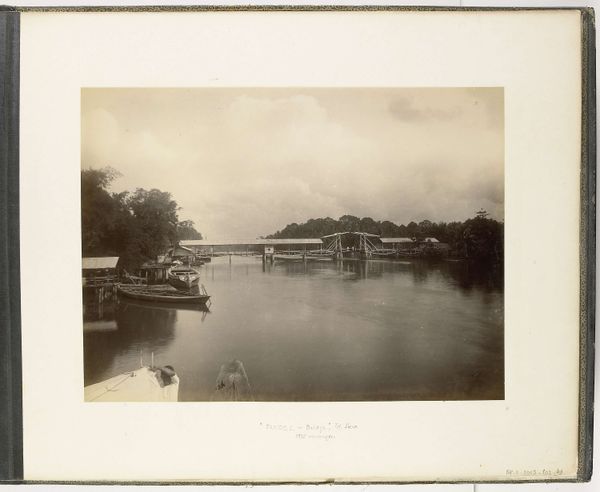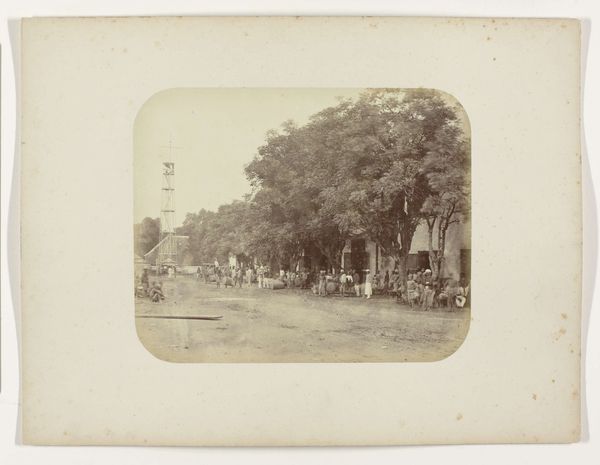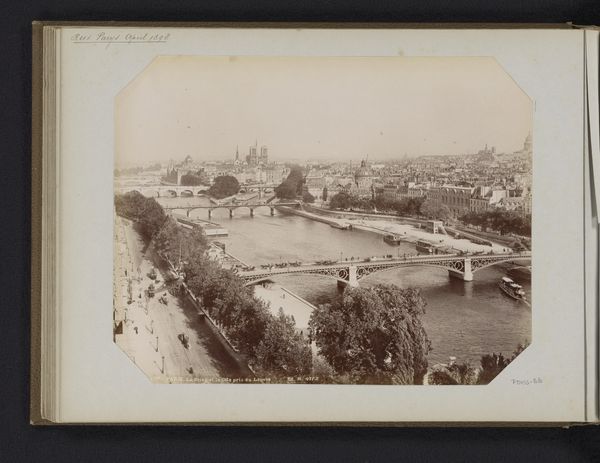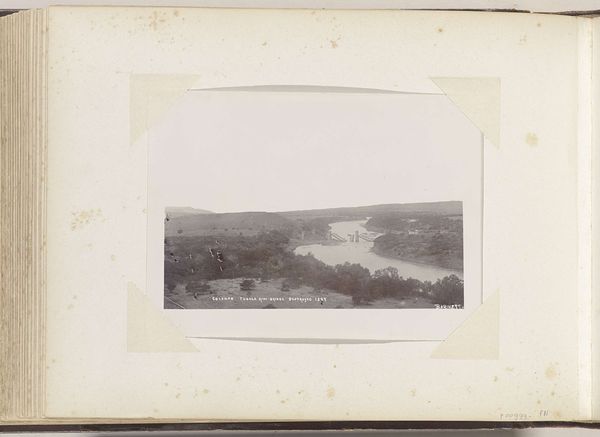
Willemskade en Kampong Baroe langs de Kali Mas te Soerabaja 1876 - 1884
0:00
0:00
hermansalzwedel
Rijksmuseum
photography
#
pictorialism
#
landscape
#
photography
#
orientalism
#
cityscape
Dimensions: height 21.9 cm, width 28.7 cm
Copyright: Rijks Museum: Open Domain
Curator: Let’s take a look at Herman Salzwedel’s photograph, "Willemskade en Kampong Baroe langs de Kali Mas te Soerabaja," taken between 1876 and 1884. It’s a landscape photograph of a river running through a bustling city, specifically in Surabaya, Indonesia. Editor: It's captivating, a dreamscape almost. The sepia tones give it such a nostalgic air, like peering into a distant memory. There’s something about the light reflecting on the water that just draws me in; you can almost feel the humid air and hear the sounds of the city. Curator: Absolutely, it perfectly embodies the aesthetic of Orientalism in photography. This approach often involved constructing romanticized visions of Eastern landscapes for Western audiences. Consider the elevated viewpoint; it gives the Western viewer a position of dominance, an almost detached observation. Editor: Dominance... hmmm. True, but I find a more immediate narrative there. These boats, each a tiny world unto itself. The life of commerce flowing, of people making their way, connecting shores. It’s intimate yet distant all at once, isn’t it? Like a quiet epic poem. Curator: Yes, but it’s crucial to remember the colonial context. Surabaya was a major port for the Dutch East India Company. Salzwedel’s photograph can also be viewed as documentation of colonial power and the resources being extracted. It reflects how photography played a part in constructing the idea of the ‘exotic’ East. Editor: Exotic, certainly a loaded term. Though as an artist, I’m always seeking something novel, something I haven’t experienced. I wonder what Salzwedel hoped to evoke. Maybe even an element of adventure? Curator: Perhaps. It also showcases a specific era in the history of photography. Note the softness of the image, an intentional artistic choice, distancing itself from documentary-style photography which was already very present at the time. Editor: It is lovely how dreamy that aesthetic is. I guess both truths can coexist in a single picture, no? Document and dream... Maybe that's the eternal magic of photographs. Curator: Precisely. That’s what makes art so rich and ever evolving—there is always another aspect, another lens, another facet to view it through! Editor: I’ll raise a glass to that... in this sepia-toned dream we've been visiting.
Comments
No comments
Be the first to comment and join the conversation on the ultimate creative platform.

